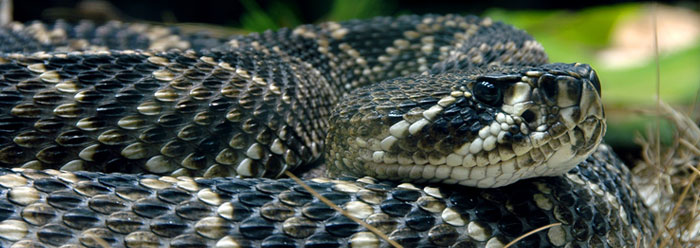Vampire bats, boas, pythons, and pit vipers―like rattlesnakes, copperheads, and cottonmouths―all have specialized infrared-sensing organs that allow them to determine if something might be prey. Of these creatures, the pit vipers’ “pit,” which is located between its eyes and nostrils, is by far the most sensitive. Until now, however, no one has known exactly how this “exquisitely sensitive” system works.1
A significant study published online in Nature has revealed a key molecule that enables certain snakes to detect infrared radiation. Now that more specifics are known about the biological features that make this remarkable feat possible, a more accurate assessment of its origin can be made.
The researchers used a new and powerful biotechnique called “transcriptome profiling” to examine the special heat-detecting nerve cells, which they found produce a much higher level of a protein called TRPA1 compared to production levels of general nerve cells. They tested the heat sensitivity of TRPA1, which is a type of “transient receptor potential channel.”
In general, receptor channel proteins are found in all cells and are essential for cell function, as they convey vital information from the outside world to the cell body without introducing any foreign substance. The researchers discovered that although other animals use TRPA1 as a chemical sensor, its properties are utilized differently in biological infrared sensors. The pit vipers’ version of TRPA1 activates when the pit organ temperature rises to 82 degrees Fahrenheit.
Thus, these heat-sensing organs do not detect incoming infrared light photons like human eyes detect visible light photons. Rather, the infrared light heats up parts of a thin membrane inside the pit organ, and TRPA1 proteins embedded on that membrane detect the temperature change. This signal goes to the cell body, which converts it into a nerve impulse that is sent to the brain. While the brain composes a heat “image” based on many individual temperature readings from across the pit organ’s membrane, the TRPA1 proteins are constantly reset for continued heat detection.
How did this mechanism originate?
The researchers reasoned that “TRPA1 has been evolutionarily selected to function as a specialized and highly sensitive heat receptor in the pit.”1 If so, how does that account for the corresponding data processing performed by the brain, which transforms the heat sensations into a useful image? Was that “evolutionarily selected” at the same time? And if it was, how did a non-physical entity like data-processing information become selected by a mechanism that supposedly operates directly on physical features?
Likewise, if TRPA1 was “evolutionarily selected,” then the membrane apparatus with the specialized nerve cells must also have been selected at the same time. And what about the selection of the pit viper’s actual pit, or cavity, within its skull? The removal or breakdown of any of these parts would break the system, so they must have come together, all at once, when the ability was inaugurated.
With each additional required element for these infrared detection devices comes another unlikelihood that chance was involved. Added together, the unlikely events multiply to defy the reasonableness of the evolutionary story that has been offered for their origin. In this way, the science itself points toward a supernatural origin for this and all other similarly complicated organs.
But if pit vipers’ pits were designed by a beneficent God, as the creation model holds, then why are they employed by the snakes in order to kill animals for food? Several possible answers have been suggested, but this research uncovered a new one.
In rare cases, as in certain insect antennae, TRPA1 is used to detect heat. Mostly it is used to detect noxious odors. But only very small changes in TRPA1 protein structure are required to transform it into an odor detector instead of a heat detector. Though it is quite speculative, pit vipers’ pits could have been used as specialized odor-detecting organs in the originally “very good” creation, only to have either been altered directly at the time of the Fall of man due to his rebellion against God, or altered naturally by mutations after the Fall.
Other possible explanations remain, but to argue that any highly engineered biological structure could not have been supernaturally created because it currently appears useful for something that is not deemed to be “good” does not logically follow. What remains highly engineered still must have been invented by a person―in this case, a divine Engineer―even though it may have been altered since its inception.
References
- Gracheva, E. O. et al. Molecular basis of infrared detection by snakes. Nature. Published online before print March 14, 2010.
* Mr. Thomas is Science Writer at the Institute for Creation Research.
Article posted on March 25, 2010.














